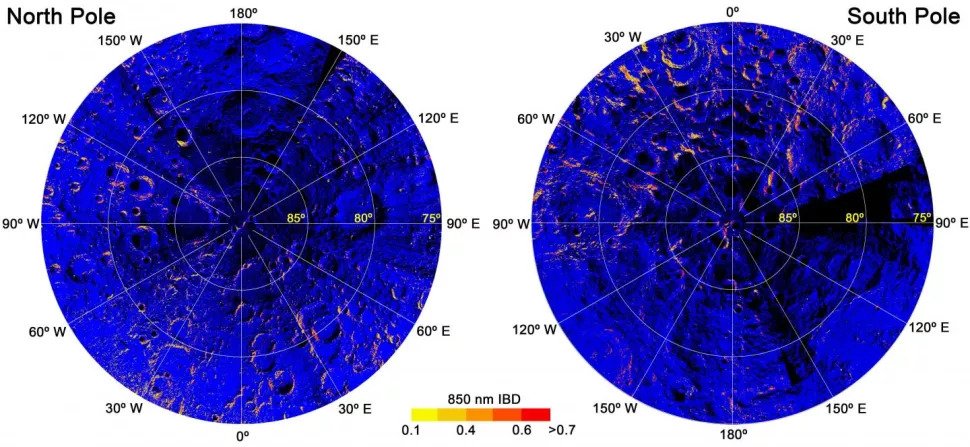
Researchers have long been aware of the presence of rust, or hematite, on Mars caused by the chemical reaction between the iron ore on the planet's surface and water and oxygen from the ancient past. However, they had never expected to find the reddish-brown iron oxide on the Moon, given that our satellite is missing two of the three key components — moisture and oxygen. Now, a new study, based on recent data from India's Chandrayaan-1 Moon-orbiting spacecraft, suggests that the Moon is displaying signs of rust and it may be Earth's fault.
The discovery of the rust is even more astonishing given that the Moon is constantly being bombarded with solar winds — which mainly comprise charged hydrogen particles — from the Sun's corona. Hydrogen is a reducing agent, meaning that it 'donates' electrons to the materials it interacts with. However, for iron to rust, an oxidizer — such as oxygen — that removes electrons needs to be present. While Earth also gets its fair share of solar radiation, it is protected by the magnetic shield that deflects most solar particles before they reach the atmosphere.
"It's very puzzling," said planetary scientist Shuai Li of the University of Hawaii, who led the study, which was published in the journal Science Advances on September 2, 2020. "The Moon is a terrible environment for hematite to form in."

The researcher stumbled upon the rust while studying data from the Moon Mineralogy Mapper (M3) instrument onboard the Chandrayaan-1 spacecraft. When Li looked closer at the Moon's poles, he found that its iron-rich rocks had spectral signatures that closely resembled those from hematite. To confirm his suspicion, Li shared the analysis with Abigail Fraeman and Vivian Sun from NASA's Jet Propulsion Laboratory (JPL).
"At first, I totally didn't believe it," said Fraeman. "It shouldn't exist based on the conditions present on the Moon. But since we discovered water on the Moon, people have been speculating that there could be a greater variety of minerals than we realize if that water had reacted with rocks."
Further study of the poles revealed that the hematite was mostly found on the Earth-facing side of the Moon, leading the scientists to suspect that it may somehow be linked to our planet. Previous research has found that 25 percent of the lunar surface is shielded by the Earth's magnetic field during its six-day full moon phase, when the satellite is between the Earth and the Sun. The researchers speculate that during this time, traces of terrestrial oxygen may be transferred to the Moon along an elongated extension of the planet's magnetic field called a "magnetotail." The magnetotail also protects the Moon's surface from 99 percent of solar winds, forming a temporary curtain that allows enough time for the rust to form.

"Our hypothesis is that lunar hematite is formed through oxidation of lunar surface iron by the oxygen from the Earth's upper atmosphere that has been continuously blown to the lunar surface by solar winds when the Moon is in Earth's magnetotail during the past several billion years," said Li.
With the plausible source of the oxygen explained, the researchers turned their attention to the next essential component for hematite to form — water. Though there is some evidence of ice water in the craters on the Moon's far side, it is nowhere near where the rust has been found. The scientists, therefore, hypothesize that the meteoroids that constantly collide with the Moon might be carrying water molecules themselves, or releasing the water molecules locked in the Lunar surface layer. "It could be that little bits of water and the impact of dust particles are allowing iron in these bodies to rust," Fraeman said.
The researchers still have no answer for the presence of rust on the Moon's far side, which Earth's oxygen cannot reach. They also need to better understand how the water on the Moon is reacting with the lunar rock. To get to the bottom of these, and other unsolved mysteries, NASA is building a new version of the instrument that collected all this existing data about the satellite's mineral composition. The tool will also map water ice on the Moon's craters and "may be able to reveal new details about hematite as well," NASA said in a press release.
Resources: Jpl.nasa.gov/Space.com, CNN.com
